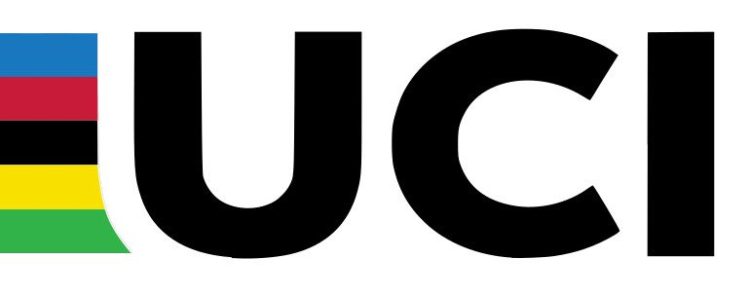ERG Mode for Indoor Cycling Explained
By Zach Nehr
If you are reading this, you have probably heard of ERG mode. But do you know exactly what it is, how it works, and when you should use it? We will answer all those questions and more in this article.
ERG mode, short for “ergometer mode,” is a setting in which an indoor trainer automatically adjusts the resistance to match a prescribed power output. The smart trainer will adjust the resistance to match the prescribed power output regardless of your cadence. If you decrease your cadence in ERG mode, the trainer will increase the resistance. Conversely, if you increase your cadence in ERG mode, the trainer will decrease the resistance.
Many indoor cyclists swear by ERG mode, using it for every one of their workouts from a steady Zone 2 ride to VO2 Max intervals. Other riders struggle using ERG mode, avoiding it at all costs. Below, I will talk about the benefits of ERG mode as well as the downsides. ERG mode is not for everybody; but for those who know how to use it, it is an incredibly valuable training tool that is exclusive to the indoor trainer.
Benefits of ERG mode
ERG mode is perfect for structured workouts because it keeps your power exactly where it needs to be. The calculated resistance keeps you honest during your high-intensity intervals and holds you back during your recovery intervals. When in ERG mode, you do not need to shift gears or adjust your pedaling when you switch from one interval to another. Instead, the trainer adjusts the resistance for you, freeing up your mind and body to focus on the power output without distraction.
You don’t need to keep your eyes glued to a screen during each interval. Instead of worrying about your power matching the prescribed interval, you can just focus on the pedaling. ERG mode naturally adjusts to your chosen cadence, which means you never have to switch gears. You could start an interval at 110 rpm and slowly decrease your cadence to 60 rpm while the trainer maintains the same resistance in ERG mode.
Downsides of ERG Mode
ERG mode feels different than riding on Free Ride mode. While the resistance does not feel entirely unnatural, it does feel significantly different from riding without ERG mode. This can take some getting used to, but some riders struggle with the feeling of ERG mode.
Additionally, you will never race on ERG mode, which is only used for workouts. If you are a serious racer, a regular in Sunday Race Club, you do not want to exclusively train in ERG mode. As soon as you start a race in Free Ride mode, the trainer’s resistance will feel different, and this could affect your pedaling style and cadence.
It is important to remember that each smart trainer feels different in ERG mode. An Elite Justo feels different in ERG mode than a Wahoo KICKR, and the list goes on. Some trainers react very quickly to resistance changes, while others offer smoother and more gradual changes. It is important to pay attention to the way your trainer adjusts the resistance so that you can get the most out of ERG mode.
When to Use ERG Mode
ERG mode and structured workouts are the perfect match. You can remove a mental load by turning on ERG mode and zoning out to your favorite playlist or TV show. As the intensity ramps up, you will have to pay attention to the workout, but you will never have to worry about changing gears or adjusting your power.
Endurance and Tempo workouts are perfect for ERG mode, which forces you to maintain a steady output at the target power. ERG mode also works for Sweet Spot and Threshold workouts, but you will have to pay closer attention to the high-intensity intervals. Once you get to VO2 Max and Anaerobic workouts, ERG mode is more of a personal preference. Let me explain.
When NOT to use ERG mode
Short, high-powered efforts are not designed for ERG mode. During these intervals, you are focused on your explosive power output. ERG mode is not designed for these rapid and significant changes in power output. Thus, your trainer will struggle to shift from a Zone 1 recovery interval to a 10-second sprint.
It is better to complete sprints in Free Ride where you can explode into the effort without waiting for ERG mode to catch up. Personally, I recommend that you only use ERG mode for intervals longer than 30 seconds. You can complete a set of 40/20s in ERG mode, but not 10-second sprints.
Technically, ERG mode will adjust the power for a 10-second sprint. But the resistance feels unnatural, and the rapid change in resistance can bog you down. Sprinting in ERG mode is not something I recommend.
How to Choose the Right Gear in ERG mode
Finally, I must mention gear selection in ERG mode. You can use ERG mode in any gear; whether it is 53×11 or 39×28, ERG mode will work. However, ERG mode will feel slightly different depending on what gear you are in.
Riding ERG mode in a big gear (such as the 53×11) will create much more inertia through the faster-spinning flywheel. This mimics the fast, high-power feeling of racing on the flat, like you would in a road race or criterium.
When you ride ERG mode in a small gear (such as the 39×28), there will be less inertia in the flywheel. This creates the feeling of riding up a climb at slower speeds. Depending on what you are training for, you can choose your gearing to mimic the real-world demands of your goal event.
—
About the Author
Zach is a freelance writer, professional cyclist, and the owner of ZNehr Coaching. He writes about everything related to bikes and endurance sports, from product reviews and advertorials to feature articles and pro data analytics. You can find Zach racing the Sunday Race Club on MyWhoosh every weekend.






















